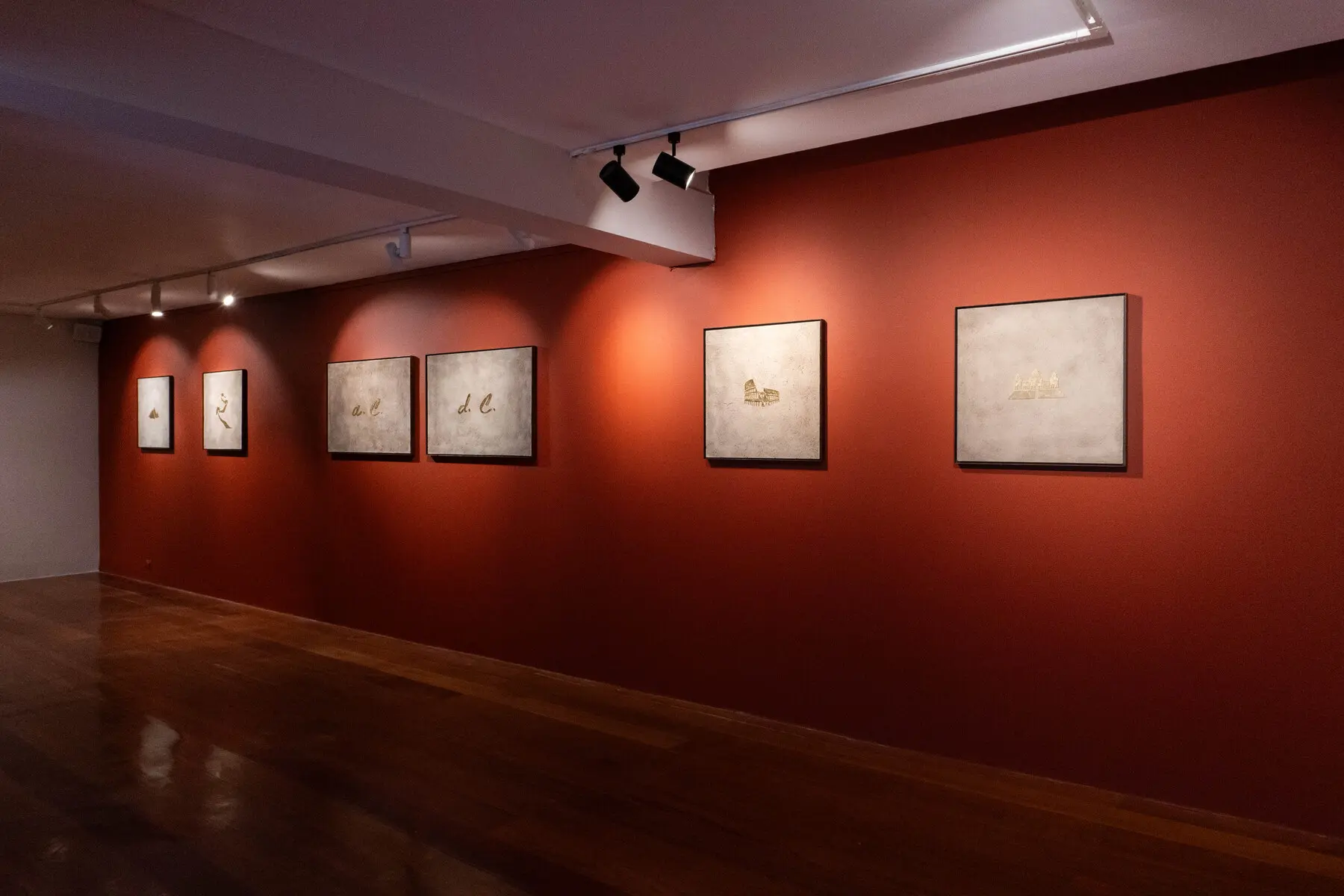
Fire burns the earth, destructive and purifying. From this scorched ground, the ashes remain. They are the witness of what has been consumed, of the struggle, of chaos, of time. And so, they are a symbol of rebirth, of longing.
Terra Veritas is not just an exhibition, but a personal journey. It emerges as a dialogue between the artist's personal experience and a profound reflection of the history of humanity in the context of the Anthropocene. This exhibition addresses Vargas' intimate relationship with his heritage, where he also explores the problematic legacy of capitalism, ambition, and the vicissitudes of the human condition.
Vargas' focus on the history of history is not just a scholarly pursuit, but a deeply personal and critical look at the narratives passed down about the transformation of the power structures that have shaped it. He begins his journey with magnanimous works such as the Pyramids of Giza and the Great Wall of China, representing the power and grandeur of their respective civilizations and exceptional architecture. However, for Juan de Dios, they are evidence of the ambition of the empires and, thus, the sacrifice of human life to create symbolic constructions that transcended reason. He juxtaposes these pieces with the Roman Colosseum and Angkor Wat, both monuments that reflect the majesty of ancient civilizations and perpetuate their legacy in the very fabric of human history. Constructions were created after Christ, which, like their predecessors, needed so many for their conception and development.
Modernity, a promise of evolution and transformation of a troubled past, is not exempt from critique in this exhibition. It creates new human environments and destroys old ones, accelerates the general rhythm of life, disposes of unprecedented forms of collective power, and yet falls back on the patterns of that uncertain legacy. This concern with the patterns of history, as proposed by Walter Benjamin in the Theses on the Philosophy of History, is a central theme of the exhibition. Benjamin suggests that history is not a triumphal march but rather a series of catastrophes and ruptures, reflecting a more tragic and fragmented vision of the human condition. This concerns the artist, so the exhibition's central work, Tierra Quemada, is an indistinct map where red lines insinuate the shapes of static continents. It evidences a grid composed of ash plates whose tonalities vary organically when compared one to the other. A vestige of contemporary civilization; a pentagram without a compass.
Almost as an omen, Vargas warns of this world as a victim of the Anthropocene. It is a symbolic cartography that defies conventional logic, as oceans become desolate landscapes and lands become ashes, evoking a world irreversibly transformed by human intervention. In turn, this surface refers both to the construction of the world and to the artisanal work of his father, a laborer whose work and ability to align tiles marked him deeply. This work also addresses the relationship between father and son and the rediscovery of one's history through the act of creating.
Growing up in a messy house but marked by his father's meticulous work, Vargas recalls watching him lay the tiles with precision, an image that remained engraved in his memory. This childhood contemplation was the first encounter with the practice of drawing and order, two elements that are intertwined in his current work. However, it was also a source of conflict, for while his father worked with hands hardened and stained by his trade, the artist, obsessed with cleanliness, always sought to stay out of that mess. By working with ash in this exhibition, he is forced to get dirty, to physically connect with his material and, in a way, to reconcile himself with those childhood memories and his father's legacy.
The exhibition is not only a testimony of human contradictions, but also a powerful reflection on the capacity of art to transcend the personal and connect with the collective. It inspires us to consider the broader implications of our individual experiences and the potential of art to bridge these personal narratives with the shared human condition.
Absence is transmuted into existence. The things of this world emerge from the fire and, inevitably, return to it, completing their cycle. And so, there is a reconciliation of knowledge between Juan de Dios and his father.
Text by: Viviana Mejía Laura Jiménez